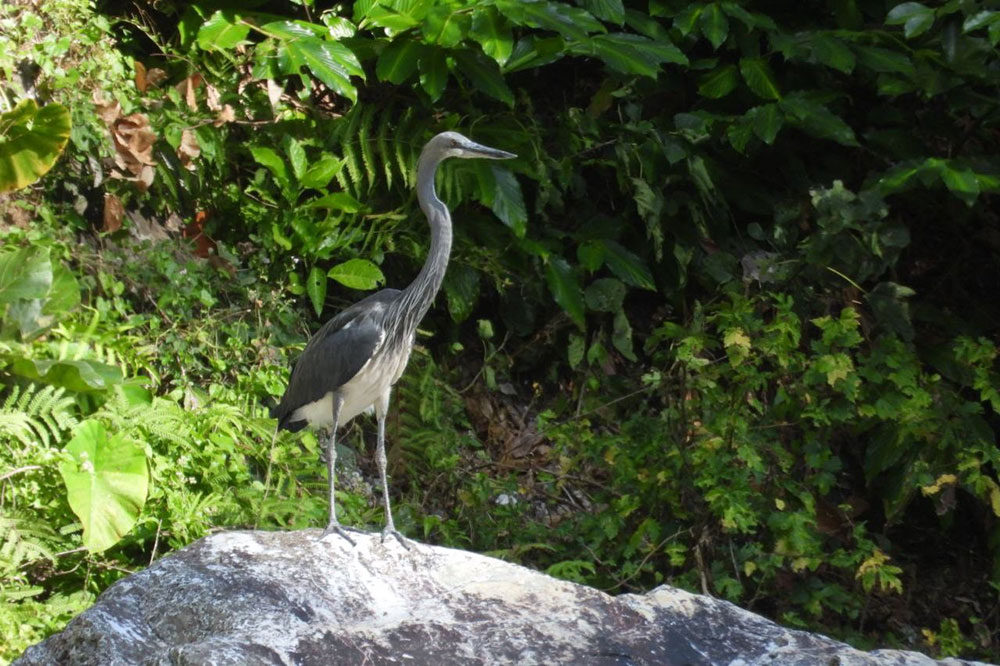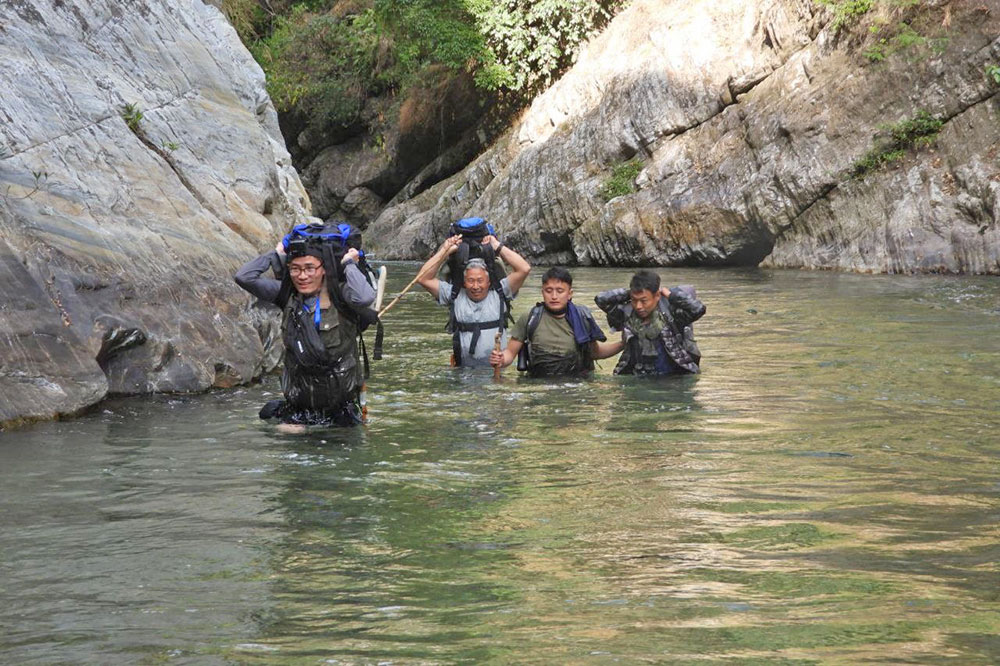Yangyel Lhaden
The Royal Society for the Protection of Nature (RSPN) is embarking on the inaugural habitat survey dedicated to conserving the critically endangered White-Bellied Heron (WBH) in the lower Wangchhu basin, encompassing parts of the Chukha and Dagana districts.
Initial sightings of the first WBH in the lower Wangchhu were reported by the RSPN team in 2021 at the Piping River, a tributary of the Wangchhu, during a preliminary survey. Subsequent sightings occurred during the annual WBH population survey in 2022 and this year.
Globally, there are fewer than 60 WBH, and Bhutan has documented 27 in 14 habitats this year, indicating an increase of four from the previous year. The species has been designated as critically endangered by the IUCN since 2007 and is legally protected in Bhutan under Schedule I of the Forest and Nature Conservation Act of Bhutan 1995.

Photo: Tshewang Lhendup, RSPN
Lungten of RSPN, emphasised the significance of this survey, stating, “There is no study or research conducted on the lower Wangchhu basin and its biodiversity conservation status and associated risk to the WBH.”
This survey, he said, “ Is important for us to establish baseline information and, at the project’s conclusion, comprehend the bird’s habitat and necessary conservation measures.”
In recent years, WBH sightings have extended to new habitats such as Kuri-Gongri catchment, Chamkharchhu, and the lower Wangchhu basin.
Contrary to earlier beliefs, the distribution of WBH in Bhutan is not limited to freshwater river systems within temperate forests. Recent sightings in various river basins, including both temperate and broad-leaved forests like the Wangchhu basin, have expanded the elevation range of the bird’s habitat from 100 to 1,300 metres above sea level.
Prior to the habitat survey, RSPN conducted advocacy and awareness programmes, along with a socioeconomic survey, to analyse the dependency of people’s lives on natural resources and their socioeconomic status.
The project to study the lower Wangchhu basin was made possible through grant support secured by RSPN from the ASAP Species Conservation Grant earlier this year.
A three-men RSPN team, alongside two forest officials from Gedu Forest Division, is navigating challenging terrains, including river banks, river crossings, and cliffs, to survey the designated 10 plots.
Due to the elusive behaviour of WBH and their habitat in remote areas, spotting them in the wild is a rare occurrence.
The team recently sighted two WBH in Bara Ray in Geytana in Chukha, recording vegetation and riverine habitat in the identified survey plots.
Notably, eight species of common waterbirds have been spotted, with the brown dipper and plumbeous being the most prevalent in the completed four plots.
The combined expertise of forest officials in vegetation and RSPN’s bird expertise proves invaluable for identifying the species.
The survey, initiated on December 4, is slated for completion by December 17.


